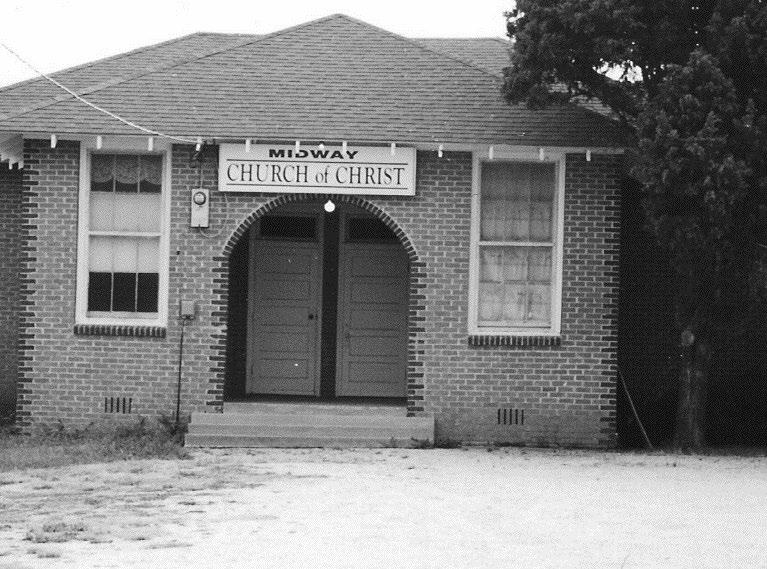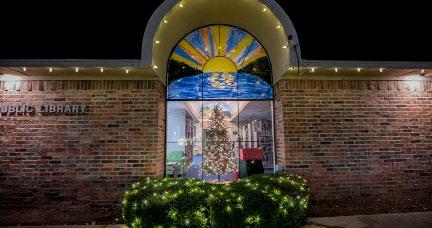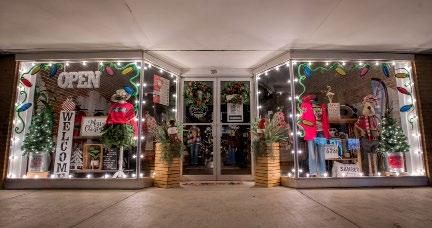
12 minute read
Muni 101 - How Cities Get Funds
Muni 101 - How Cities Get FundsHow Cities Get Funds
Municipal Finance Defined: Municipal finance is the revenue and expenditure decisions of municipal governments. It covers the sources of revenue that are used by municipal governments – taxes (property, income, sales, excise taxes), user fees, and intergovernmental transfers. It includes ways of financing infrastructure through the use of operating revenues and borrowing as well as charges on developers and public-private partnerships. Municipal finance also addresses issues around expenditures at the local level and the accountability for expenditure and revenue decisions, including the municipal budgetary process and financial management. Sources of Municipal Income: Revenue is the income a local government needs to pay for all of the services it provides. A revenue structure describes the many sources of income a local government receives. The major sources of revenue include charges for services, taxes, other revenue sources, and intergovernmental transfers, which are defined below. Since local governments are corporations of state government, local revenue structures are largely determined by state doctrine. While state governments generally aim to provide sufficient autonomy and support to local governments, there are fifty state-local revenue systems that even vary within states. In this case, autonomy refers to the amount of authority a municipality has over its ability to initiate or modify the types and amounts of revenue it receives.
Charges for Services
Local governments provide a wide range of services to residents and businesses. Although many services are provided without charge, some services are supported by charging for the use of the service. While these services may vary, cities often provide utility services such as water, sewer, solid waste, and electricity.
Revenues from Taxes
Taxes are an essential source of revenue for all levels of government. Like other parts of the revenue structure, tax revenue setting by municipalities is restricted by state governments. States are not uniform in their approach to allowing municipalities to utilize the three major sources of tax revenue – property, sales, and income taxes – usually permitting some combination. In some states, municipalities receive revenue from two of these taxes, usually some combination of property and sales taxes.
Revenue from Other Sources
In order to bolster revenue, there are several other revenue sources, including local options taxes, franchise fees, and fees levied by municipalities, counties, or special district governments with state approval. These additional sources help municipalities, especially smaller cities, gain financial stability, broaden the tax base, expand the types of activities taxed and increase their independence from state and federal finances.
Two common types of borrowing are general obligation bonds and revenue bonds. General obligation bonds pledge the “full faith and credit” of the local government. Local governments agree to use tax money to repay the debt. General obligation bonds cannot be issued unless a majority of the voters approve.
Revenue bonds are repaid from revenues the project itself generates. Water and sewer projects lend themselves well to the issuance of revenue bonds, where revenues from user fees can be used for repayment. Communities have also pledged the future revenue from a specific purpose of local option sales and use tax to finance bonds that allow for early construction of the approved project.
The City of Sanger
The city operates six major funds: General Fund, Enterprise Fund, 4A Economic Development Fund, 4B Economic Development Fund, Debt Service Funds, and Capital Improvement Funds.
General Fund
The General Fund is the fund used to finance the operations of the general government. The General Fund includes Public Safety, a portion of Public Works, Community Services, Sanitation, and a portion of Administrative and Support Services. Public Safety includes Police, Municipal Court, Animal Control, Code Enforcement, and Fire and Ambulance departments. General Fund revenues come from a myriad of sources including property tax, sales tax, court fees, Fire and EMS revenues, and franchise fees. By far, the largest revenue stream is property tax.
Enterprise Fund
The Enterprise Fund is made up of utility departments including Water, Wastewater, and Electric. Expenditures include daily operations of the utilities, capital improvements, as well as transfers to the Internal Service Fund, The Enterprise Debt Service Fund, and the Electric Storm Recovery Fund.
Internal Service Fund
The Internal Service Fund includes departments with responsibilities in both the General and Enterprise Funds. The Internal Service Fund allows us to show the department’s entire budget in one place, making it more transparent and easier to manage. The departments include Non-Departmental costs, Mayor and Council, Administration, Public Works, Engineering, Finance, Facilities Maintenance, and Fleet Services.
Economic Development Funds
Under Texas Law, certain municipal governments can establish Economic Development Corporations for the purposes of attracting economic development and other limited purposes. These corporations are overseen by boards appointed by the City Council. Sanger is one of the few Cities that has both a 4A and 4B Economic Development Corporation. Both of these corporations receive revenues from a separate ½ cent sales tax. This sales
tax generates around $500,000 each year for each of the corporations. While these funds can only be used for limited purposes, having them frees up revenues for other purposes.
Debt Service Funds and Capital Projects Funds
Long-term, property tax-funded debt is paid from the Debt Service Fund. Likewise, the Enterprise Debt Service Fund accounts for a long-term debut supported by utility operations. The Capital Projects Funds are where expenditures on Capital Projects are paid. (There are separate funds for General Capital Projects and Enterprise Capital Projects.) Both debt service and capital projects funds serve as internal service funds used for accounting purposes.
Hotel/Motel Tax Fund
The expenditure of hotel occupancy tax (HOT) funds is tightly regulated by state law. To ensure that these funds are spent appropriately, they are placed in a separate fund and not commingled with the General Fund. The city also provides up to $14,000 a year in HOT taxes to the Sanger Chamber of Commerce for marketing.
By Sanger Area Historical Society and Museum
School buildings have had quite a history in the community of Sanger. A few burned, new ones built in record time, old schools reconfigured to meet the needs of the students, and then the school district made decisions to build and accommodate the growing student population.
The original Sanger school stood where the current 6th Grade Campus is located. It was a wooden building with one room and dirt floors. The school classes began in 1888, although it became independent in 1898. Students attending this one-room school were for the immediate Sanger children, and country families used the Goodview, Union Hill, and Blue Mound schools. A photograph included in “Around Sanger” publication was taken about 1895. Miss Ida Allred is shown in the picture wearing a striped dress in the second row. She was the only child to be identified. The early school building was made of wood and had a broken window in the background. An attachment to this article shows this picture. In 1910 a new school building was built. This school was made of brick and seemed to be a sturdy structure for the students. The building was located at the current 6th-grade campus site. The superintendent during the 1910 completion of the building was J.W. Beatty. The picture is also attached to the article and came from the estate of Bessie Kirkland, and her mother’s name was written on the back of the photo, “Mrs. Ola Kirkland.” The photographer’s stamp indicated “Hillyer, Sanger, Tex.” The building of 1910 burned in October 1916. The students attended classes for the remainder of the school year in the Opera House (the W.O.W. building still located on Bolivar Street
downtown.) Students also had classes in the Dunn Building, which was located at the old Gentle’s Hardware store location and now a vacant lot at the northeast corner of Bolivar and 4th Street. Churches opened their building to hold classes for the students during this time of rebuilding the school building, which opened in 1917.
Original Sanger School Building of 1888. Photo taken about 1895 according to writing on back of photograph. Sanger became independent in 1898. Miss Ida Allred is shown in the photograph in the second row, 5th from left and is the only child to be identified.
The school building was remodeled and restructured to include a new gym and stage on the upper floor. Extensions were added to both ends of this existing building and was added to meet the growing population of students. The school building held first through twelfth grades beginning on the far west end with elementary and moving eastward with the older student classes. This school became the middle school campus after the new high school was built, and burned in July 1984. All that remained was the administration office at the east end of the 6th grade campus between 6th and Elm Streets just west of 5th Street. To the side of the administration building is a cornerstone placed by the WPA when the

Sanger School Built in 1910. New brick building for Sanger students which burned October 1916.
J.G. Shelton & Son, Contractors school building was built in 1917 after the fire of 1916. When viewing the photograph of this school building at the end of the article, you can see the white cornerstone on the right side of the building. This cornerstone was salvaged during the reconstruction of this building and is now placed at the admin building (photograph attached). The cornerstone reads:
1917 Sanger High School School Board
T. A. Gentle, Prest
H.D. Greene, Secty
D.M. Cowart
J.A. Fife
E. Horst
James McBride
J.M. Wilfong
J.W. Talkington, Supt
Wm. Albert Tacket, Archt
The opposite side of the cornerstone reads: Laid by Bolivar Lodge, No. 418, Sept. 27, 1917 (with a Masonic emblem)
In 1948, this 1917 building was remodeled. There was a gymnasium on the west end of the property which was separate from the main building which burned in January 1948. The loss was estimated at $75,000 by Superintendent C.D. Allen and was partially covered by insurance. A new gym and stage were added in the upper story of the renovated school building which opened in the fall of 1948.
Many former students of Sanger ISD attended school in the building that was built in 1917 and later remodeled in 1948. Current day the Sanger ISD has seven school campuses as follows:
• Chisolm Trail Elementary located on FM455 • Butterfield Elementary located on Indian Trail • Clear Creek Intermediate located on I35 • 6th Grade Campus (at the site of the original school system located on 7th Street • Sanger Middle School located on Berry Street (was the old high school until new high school built on FM455) • Sanger High School located on FM455 • Linda Tutt High School located on Hughes Street (was the first separate elementary school built in 1958 for grades 1st through 5th). Three additions were added to the school, the last added in 1976.
A new high school was built in Sanger on FM455 and the previous school building located on Berry is now the campus for the Middle School.
Sanger continues to explode with growth with the need for new buildings to accommodate the students and a new high school is being planned.

School was built in 1917 after the previous school burned in October 1916. The school district was assisted by the Works Progress Administration funds. Remodeled school building of the original one built in 1917. The remodeling was done in 1948 with school structure changed to add a gymnasium and stage on the upper level with an extension to the east end of the school to house classes for science, math and home economics classes and the western end to house elementary students.
Blue Mound School was constructed in the 1930s and used until the school consolidated with Sanger ISD in 1949. It also served as a community center. The building is located on I35 south of Sanger and is home to a small church.

at the southeast corner of Metz and View Roads, north of Sanger where it still stands today. The building was very similarly built like the Blue Mound School which is just south of the Blue Mound First Methodist Church on Interstate 35. In later years this Goodview School building was purchased by Joe Ashcraft and wife, Esta, and they converted to be used as their home. (photo attached)
Union Hill School was also known as Pond Creek School. The Union Hill community was just northeast of Sanger and the building was used as a Baptist church, also. The school was consolidated with the SISD in 1947 and in the 60s, the building was remodeled into a home by Billy Earl Switzer and wife, Gwen. It later was destroyed by a fire. (photo attached)
Since the inception of education provided to Sanger students officially in 1888, there is a constant focus on maintaining the importance of learning for the youth of Sanger. The high school campus may have some big changes in the not-so-distant future to accommodate continuing the education of students. Sanger should be proud of the history of education kept for generations to come.

Recap of the Season








That’s a Wrap!
Crafting with Mrs. Claus & Visit with Santa



That’s a Wrap!









